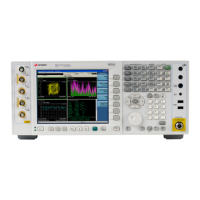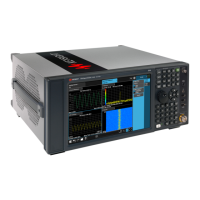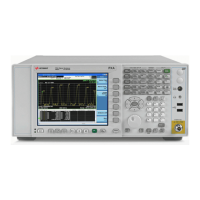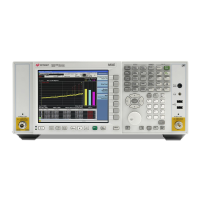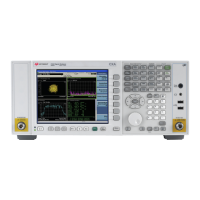3 VMA Mode
3.1 Digital Demod Measurement
high enough that the preamp option would have excessive third-order
intermodulation or compression. The preamp, if purchased and used, gives better
noise floor than does the “Low Noise Path.” However, its compression threshold and
third-order intercept are much poorer than that of the non-preamp path.
There are some applications, typically for signals around −30dBm, for which the
third-order dynamic range of the standard path is good enough, but the noise floor
is not low enough even with 0dB input attenuation. When the third-order dynamic
range of the preamp path is too little and the noise floor of the standard path is too
high, the Low Noise Path can provide the best dynamic range
The graph below illustrates the concept. It shows, in red, the performance of an
instrument at different attenuation settings, both with the preamp on and off, in a
measurement that is affected by both instrument noise and instrument TOI. The
green shows the best available dynamic range, offset by 0.5dB for clarity. The blue
shows how the best available dynamic range improves for moderate signal levels
with the low noise path switched in. In this illustration, the preamp improves the
noise floor by 15dB while degrading the third-order intercept by 30dB, and the low
noise path reduces loss by 8dB. The attenuator step size is 2dB.
There are other times where selecting the low noise path improves performance,
too. Compression-limited measurements such as finding the nulls in a pulsed-RF
spectrum can profit from the low noise path in a way similar to the TOI-limited
measurement illustrated. Accuracy can be improved when the low noise path allows
the optimum attenuation to increase from a small amount like 0, 2 or 4dB to a larger
265 Vector Modulation Analyzer Mode User's &Programmer's Reference

